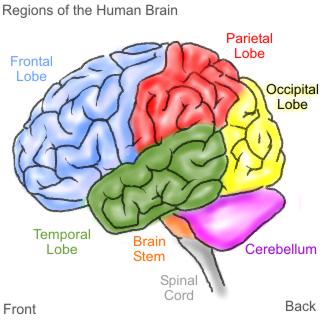AS Psychology: The Multi-Store Model of Memory
What is Memory?
The definition of memory is essentially 'The process in which we retain information about past events.' This could refer to our immediate past, or events that happened years ago.

The Multi-Store Model of Memory
The Multi-Store Model of Memory (MSM), produced by Atkinson and Shiffrin in 1968, is an explanation of how memory processes and stores work.
The MSM consists of 3 different unitary stores; The Sensory Memory (SM), the Short Term Memory (STM) and the Long Term Memory (LTM).
Sensory Memory:
The first memory store is the Sensory Memory. The SM is constantly receiving information, either: visually, auditorily or haptically. However, most of this information actually receives no attention and stays in the sensory memory until it decays (taking a matter of milliseconds). However, if a person is focusing on a piece of information, then instead of decaying it will be directly transferred to the Short Term Memory.
Short-Term Memory (STM):
When in the STM, information is very 'fragile' and very likely to be displaced if it is not rehearsed. The average amount of time that a person can hold a piece of information in the STM is around 20 seconds and the amount of information that can be held is 7+/-2 items. If the information is rehearsed and paid attention too, then the information will be transferred to the long term memory store.
Long-Term Memory (LTM):
The Long Term Memory has a potentially unlimited capacity and the duration of which a piece of information can be held in the LTM is unlimited also.

Research Evidence Supporting the MSM
There is some strong research evidence that supports the Multi-Store Model (MSM) and the things that it suggests about memory stores.
For example, in 1966, two psychologists 'Glanzer' and 'Cunitz' conducted an experiment in which they gave participants a list of 50 words that they needed to memorize in a given amount of time.
This experiment found that there was a 'recency effect' where the participants remembered the most recent words that they had read because they had not yet been displaced from their STM, they also found that there was a 'primary effect' where the participants remembered the first words on the list because they had been rehearsed more and thus transferred into their LTM.
These findings support the MSM because it shows that there are differences between the STM and the LTM and that they are 2 separate, unitary memory stores.
Research Evidence Opposing the MSM
The main criticism that people have regarding the Multi-Store Model of Memory is the fact that it oversimplifies the memory structures and processes.
The MSM suggests that the STM and the LTM are two different unitary stores which operate in a single, uniform fashion. However, research evidence such as the 'KF' case study, that was conducted by 2 psychologists 'Shallice' and 'Warrington' in 1970, opposes this.
Someone known as 'KF' suffered from brain damage which resulted in them having difficulty processing verbal information in their STM. However, KF's ability to process visual information was completely normal.
These findings suggest that the STM is in fact a non-unitary store with different parts dedicated to processing different types of information (haptic, visual, auditory etc).
Research has also shown that rehearsal is not the only way that information can be transferred from the STM to the LTM.
In 1972 Craik and Lockhart suggested that long-lasting memories are created by the process that you use to remember the information rather than how much you rehearse it.
They found that if a person uses 'semantic processing' (remembering by creating a deeper meaning) to remember information rather than 'shallow processing', they would be much more likely to remember it.
Sensory Memory
| Short Term Memory
| Long Term Memory
| |
|---|---|---|---|
Encoding
| Visual, Auditory and Haptic
| Mainly Acoustic
| Mainly Semantic
|
Duration
| Milliseconds
| Approx. 20 seconds
| Potentially Unlimited
|
Capacity
| Very Limited
| 7+/-2 Items
| Potentially Unlimited
|
Summary
Key Words:
- Duration: How long a piece of information can stay in your memory before it is no longer available.
- Encoding: The way that information is changed so that it can be stored in a memory store. Environmental stimuli enters the brain and then is stored in various forms.
- Capacity: A measure of how much information can be stored in the memory.
- Haptically: By touch.
- Acoustically: By sound.
- Semantically: By meaning.
- Visually: By sight.








